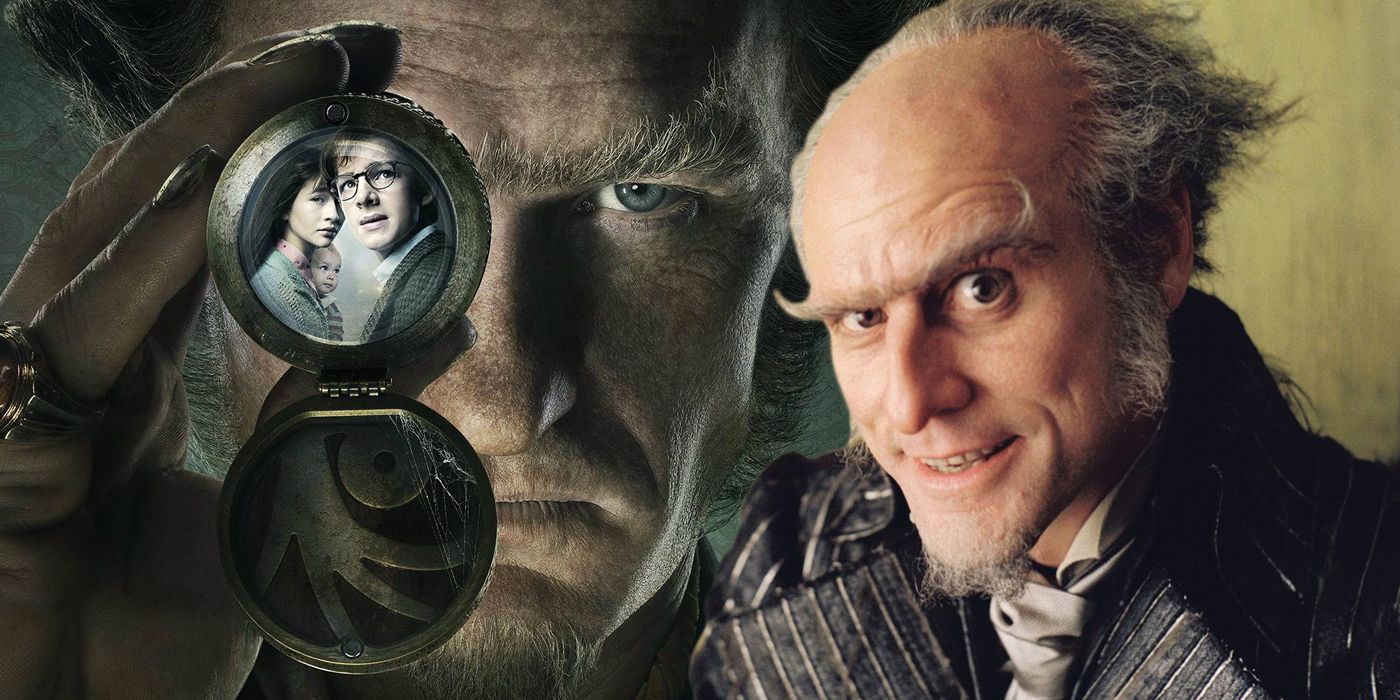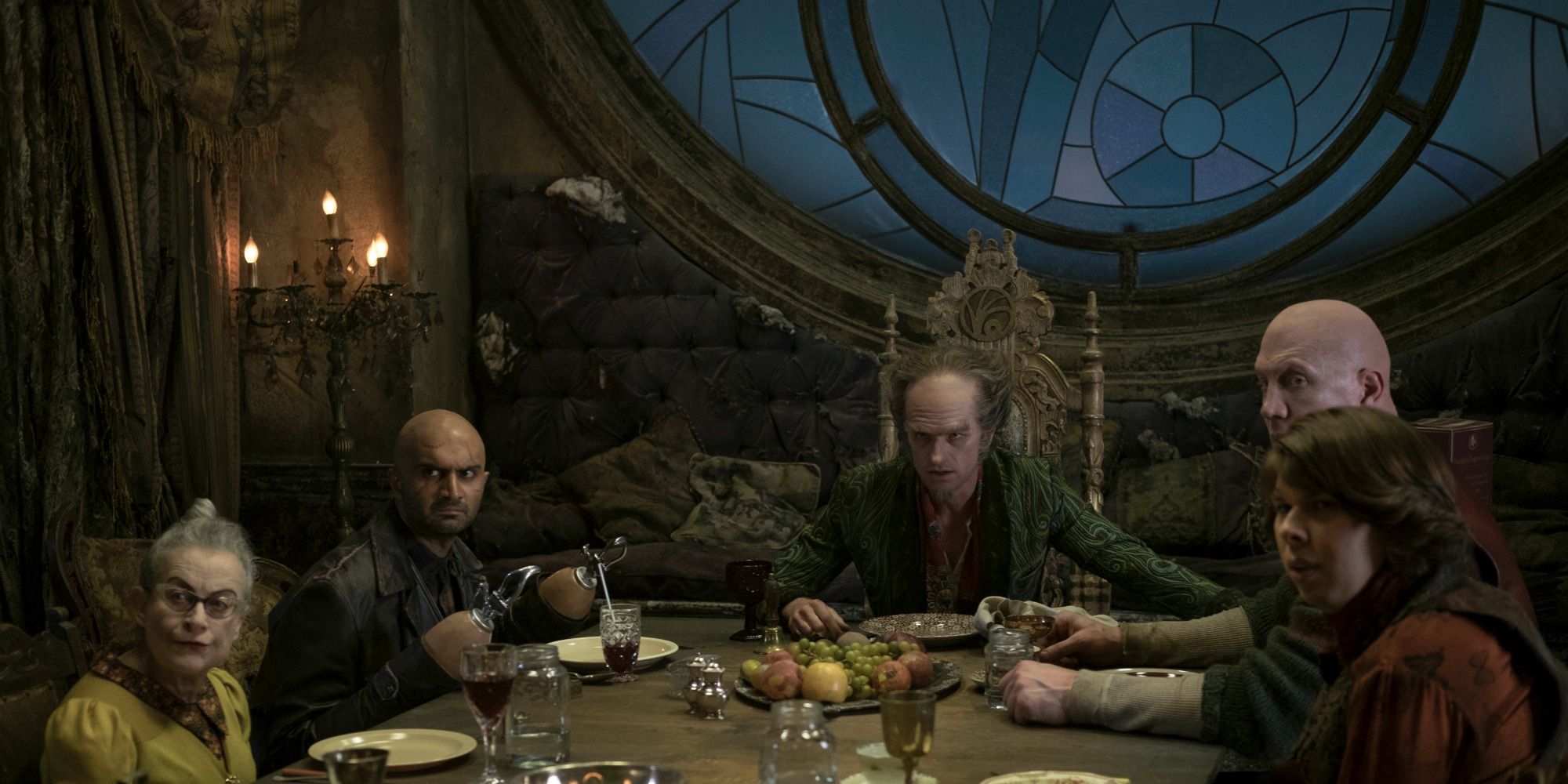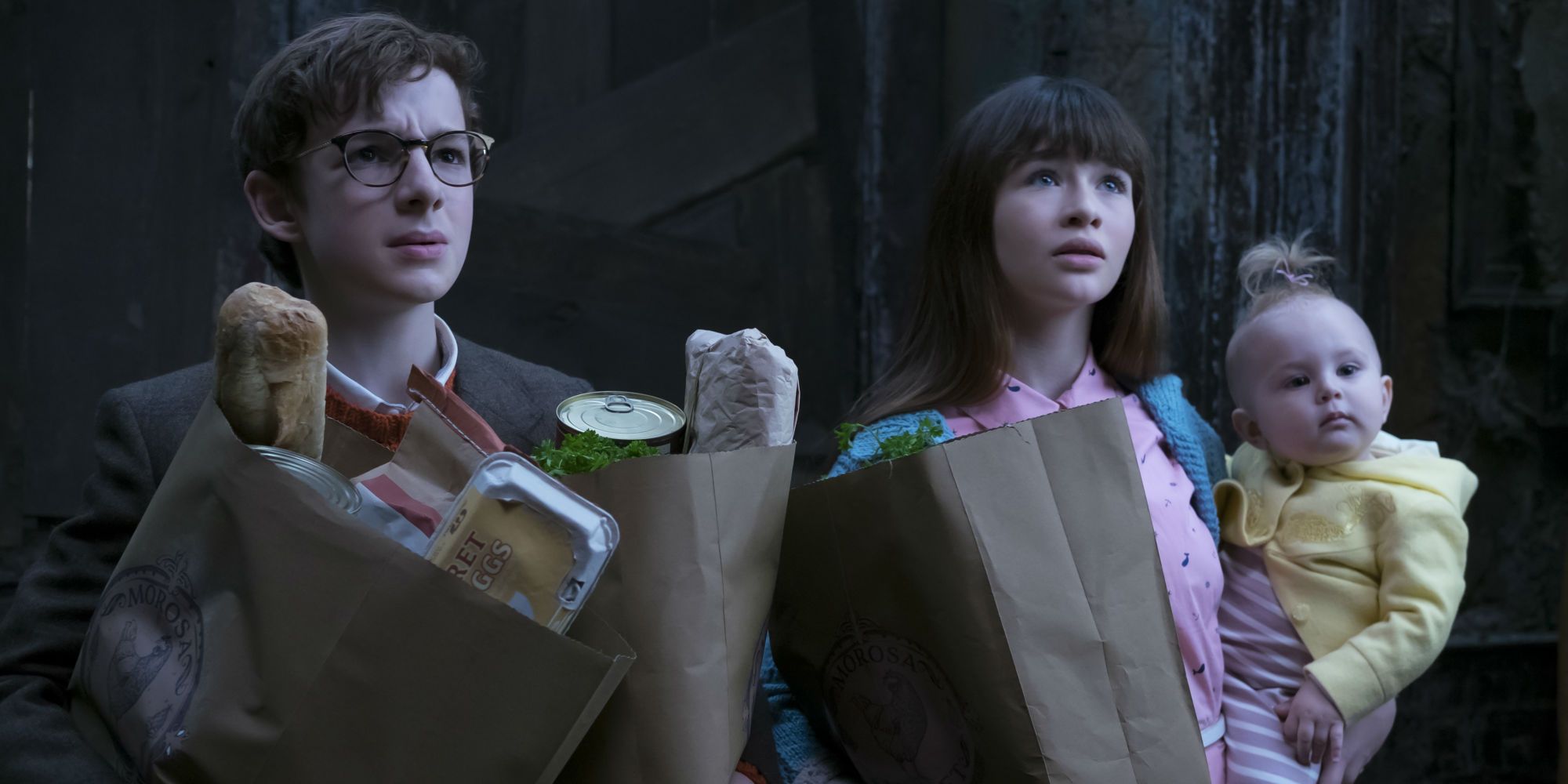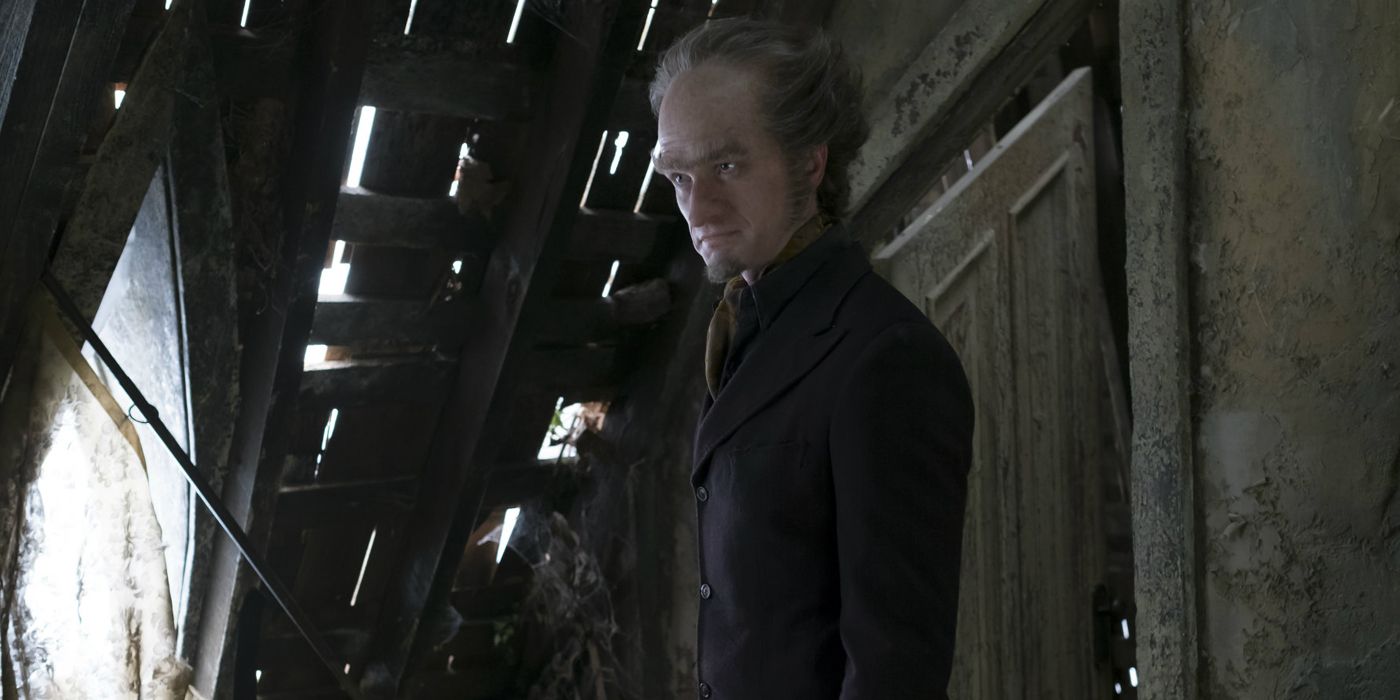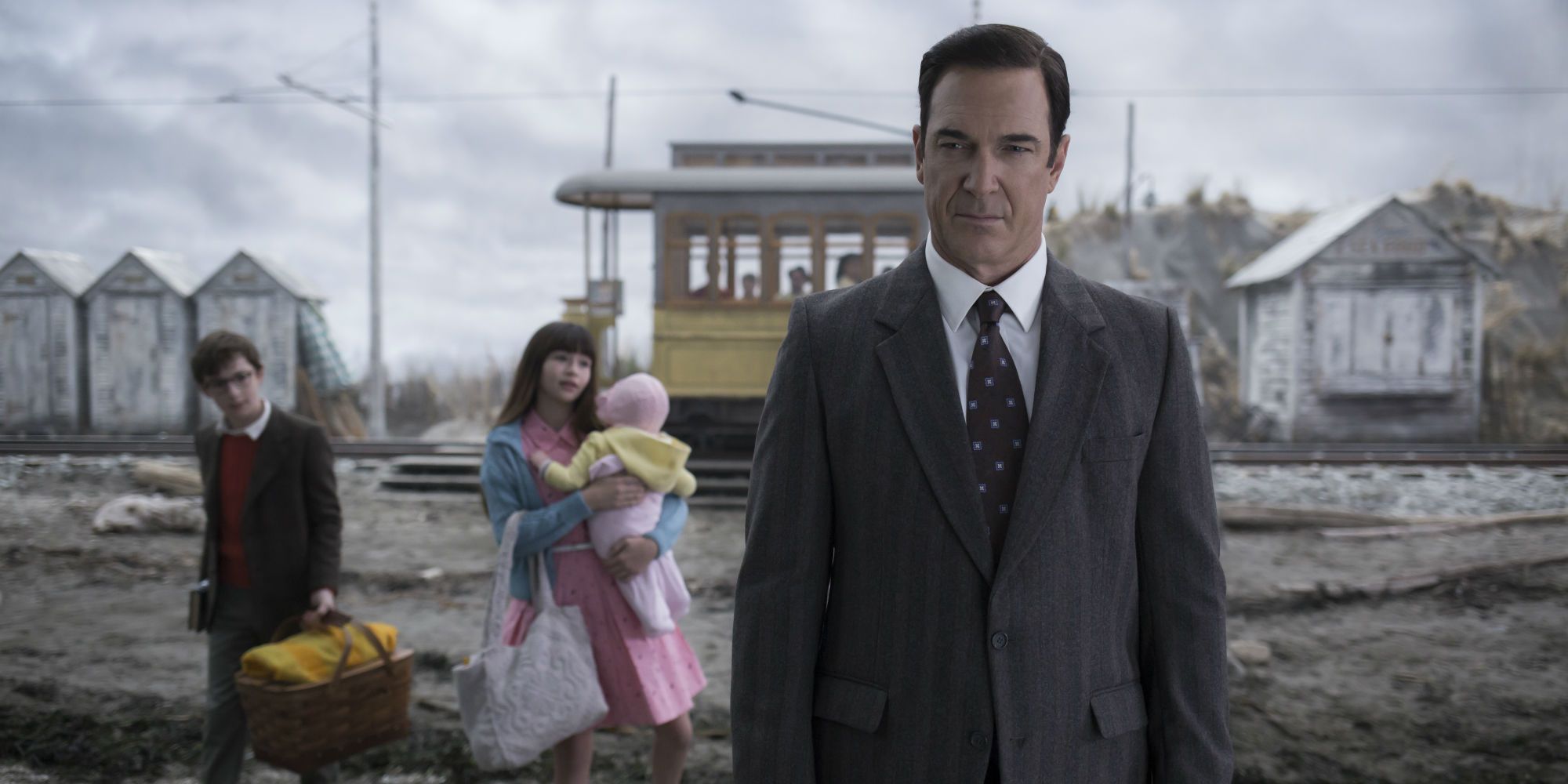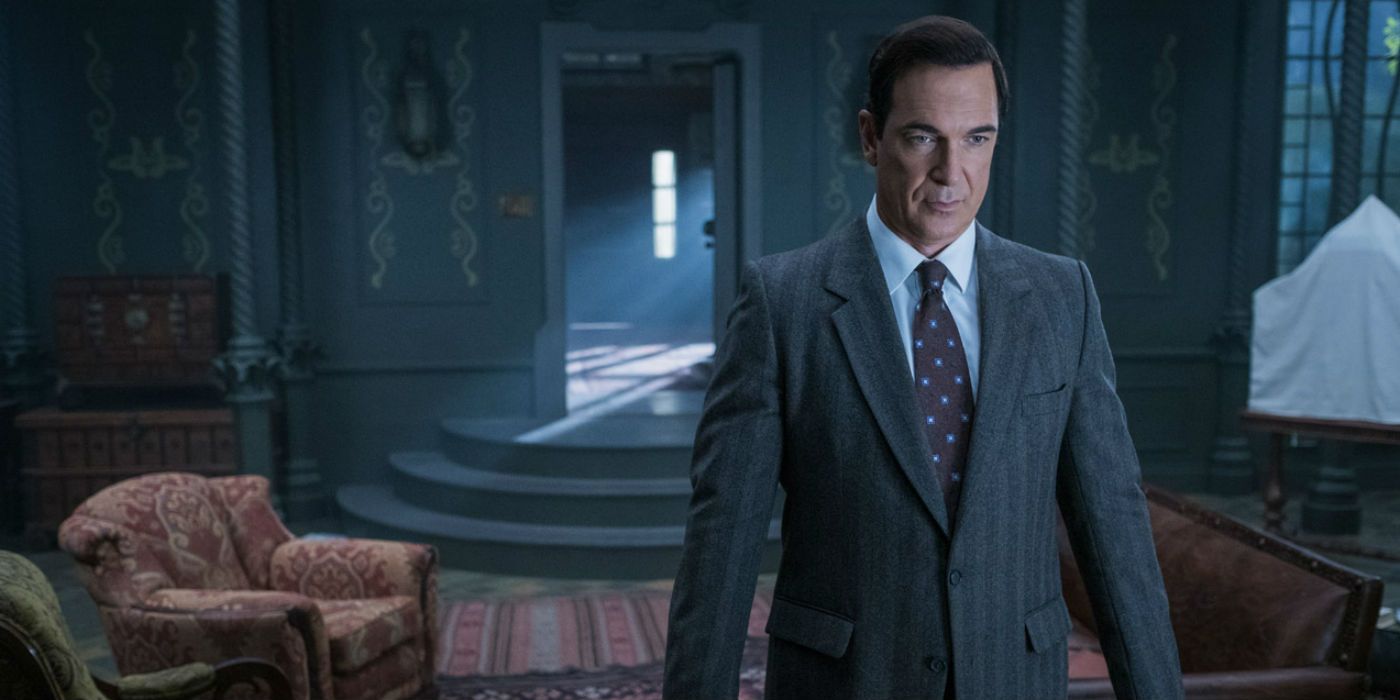Netflix’s first hit of 2017 is unequivocally the madcap (and miserable) TV show A Series of Unfortunate Events. Bringing the Lemony Snicket book series to screen with extreme confidence, it captures the wry idiosyncratic nature in every aspect of its filmmaking, from its visual style – a mash-up of 1990s Tim Burton and Wes Anderson with sprinklings of pantomime – to the layered teleplay from author Daniel Handler (who wrote the books under the Snicket name). For fans it’s a delirious realization of an essential book series, while for newcomers it delivers a wholly unique story told in a manner rare in television.
Of course, this isn’t the first adaptation of the Snicket-verse. In 2004, a few years before the books wrapped up, Brad Silberling (otherwise best known for Caspar) made a movie based on the series that functioned primarily as a Jim Carrey vehicle. It was received fairly well, but not well enough to inspire faith in a sequel, leaving the story hastily concluded and dangling at the same time. The film is now regarded with mixed feelings; it does operate neatly as an off-kilter family adventure, but in terms of adaptation it’s rather fluffy.
So, now that Barry Sonnenfeld (who was meant to direct the series before leaving over budget issues) has got to bring his and Handler's pure, untampered vision to the screen, how do the two versions compare?
The Format
Because both the movie and the TV series were made with the involvement of Daniel Handler (he provided the first draft of the movie's screenplay) and an eye towards capturing the world of the books (there are some similarities in the design approach), the most remarkable difference between the two is the structure. The movie took the first three books and merged them into a single movie - The Reptile Room and The Wide Window were 15 and 30 minute episodes sandwiched into the plot of The Bad Beginning – while the show gives each book two episodes (of varying length, but around 40 to 60 minutes), with the plan being to have a 4-5-4, three-season adaptation.
In terms of the faithfulness each method enables, there should be no competition. Although the Netflix show takes some liberties with various minor plot points and inserts a lot of connective tissue between what are, in print, rather standalone stories, there’s freedom to get so much more of the story told in a fitting way: The Reptile Room isn’t a zany stop-off, but a genuine taste of how normality could resume; The Wide Window not a tale of a jittery guardian, but a morose account of the children realizing they will have to take action themselves.
Beyond adaptation issues, the two-parters simply allow for better storytelling; there's more room to get to know the eclectic cast of characters and the world they're in, as well as plentiful opportunity for divergences and asides from the narrator, Patrick Warburton's Lemony Snicket.
The Children
What the Netflix structure helps most is the children's growth. On paper there’s not much to distinguish the Baudelaires of either adaptation beyond the choice to cast younger, yet just as accomplished actors for the show (a move that is impressive now and will pay dividends down the line). There are subtle differences – in the Netflix show Sunny’s subtitles are more casual, Violet gets her thinking ribbon from her pocket rather than wearing it constantly, and Klaus has glasses -correcting a poor movie decision made presumably to avoid Harry Potter comparisons – but for all intents and purposes both get them right.
What the TV actors - Malina Weissman, Louis Hynes (who is – fun fact – two years older than the actress playing his sister) and Presley Smith - have is time. They’re allowed to not only invest more into their characters and better define the little tics of their personalities but actually evolve and mature over the show. The extent of this won’t be clear fully until season 3, but already we can see Violet, Klaus and even Sunny starting to gain a greater confidence, independence and worldly knowledge. For contrast, in the original film the trio mostly came out of the adventure unchanged beyond getting a semblance of closure.
Count Olaf
Of course, as the marketing for both adaptations highlighted, the “star” of the franchise is self-proclaimed villain Count Olaf. This is strange given the approach of the books, but makes sense in more mass-market media, given how it allows for a masthead adult star. And, because of that, he is probably going to be the most divisive element in terms of who people prefer.
Jim Carrey in the movie is Jim Carrey mugging, which is strange, but means he hams it up brilliant for the disguises – there’s a cringe-worthy brilliance to both his Stefano and Captain Sham. Neil Patrick Harris, meanwhile, goes for a (marginally) more nuanced character that feels like he actually comes from the stylized world. He’s deluded and egotistical, but not quite as cartoonishly so. The big distinction, though, is the menace; with Harris you genuinely believe he would kill the children if he had the opportunity, and his appearances strike more dread (to the point the seventh episode makes his disguise reveal part of a big emotional gut-punch).
Again, it’s up to personal opinion more so than others – and it’s worth further noting Carrey had a smaller story to work with and thus a different approach – but in terms of capturing the character and being overall most watchable, it has to be Harris.
Capturing The Feel Of The Books
While the performances offer more, where the show really overtakes the movie is in how it captures the feel of the books. This was where, for many fans, the film fell down; it had the visual styling of Snicket’s illustrations, the anachronistic setting and Jude Law morosely saying it wasn’t a happy story (complete with fake-out Happy Elf opening), but a lot of it felt very surface level. The show unequivocally nails the tone better and on a deeper level.
Obviously Snicket being a constant, on-scene presence makes a massive difference, although it's the subtler elements that are most impressive. Right from the start, the underlying theme of the idiocy of adults is much more pointed; anyone over the age of twenty is constantly oblivious of the already idiotic Count Olaf’s disguises and treat the children as lesser despite their evidently superior intelligence. Their condescendence and the frustration it creates is palpable.
That’s nothing on the relentless experimentation with language, though. The books seemed to almost exist purely for their delirious wordplay: critical theory applied to a narrative; idioms pushed to breaking point; an entire page consisting only of “never” repeated over and over. This was never really taken on board by the film, probably because setting it up is time-consuming and it's rather understated as an idea, but it nonetheless leaves a hole in the center of the world; they even removed the Baudelaire's first outsmarting of Olaf by using the double meaning of legal jargon.
The show, conversely, wholeheartedly barrelled into linguistic play and is much the better for it. Handler’s screenplay is so dense with literary and grammatical gags, and in turn heavy on call backs to previous gags in later episodes, that it’s a joy to simply hear it play out. It's a simple tic, but makes everything feel more cohesive; when Aunt Josephine leaves a trail to find her in Curdled Cave using grammar mistakes, in the movie it’s a quirk of her character, but in the show it’s another humorous divergence in a series that’s already spent an entire episode on a figuratively/literally running joke.
It’s things like this that elevate the show to definitive status – it succeeds in presenting Snicket's idiosyncrasies in a way the film never came close to. Although what pushes it further is how it handles something the movie wholly ignored…
The Mystery
As the books developed and moved away from variations on the same “children get new guardian, Count Olaf turns up in disguise” arc, the conspiracy involving V.F.D. and the Baudelaire parents’ mysterious past began to deepen. This was only of fleeting importance up until the introduction of the Quagmires in The Austere Academy (Book 5) and wasn’t essential until The Vile Village (Book 7), so the film naturally circumvented it almost entirely; the only element it maintained was the vague relationship between all the guardians and "those who start fires and those who put them out" adage. This was a shame, but hardly surprising given the content it was adapting.
Because the Netflix series is dealing with longer-form storytelling and the fairly safe knowledge it will get to adapt the full 13 books, it’s not had to be so restrained, having Violet, Klaus and Sunny aware of the wider plot much earlier than they ever were in print. This is obviously refreshing for those revisiting the series and overall gives more for adults to get their teeth into. While it’s hard to blame the movie for not having it, it does undoubtedly strengthen the world and make the show a more engaging watch.
-
It’s unfair to hate too much on the movie for its failings as an adaptation given the restrictions it imposed on itself and the admirable attempts made to bring the books to screen. However, the Netflix show has a bigger canvas, loftier ambitions and is fundamentally so well constructed that it can’t help but best the film in almost every way. The wait for season 2 is going to be a hard one.
A Series of Unfortunate Events season 1 is available now on Netflix.

